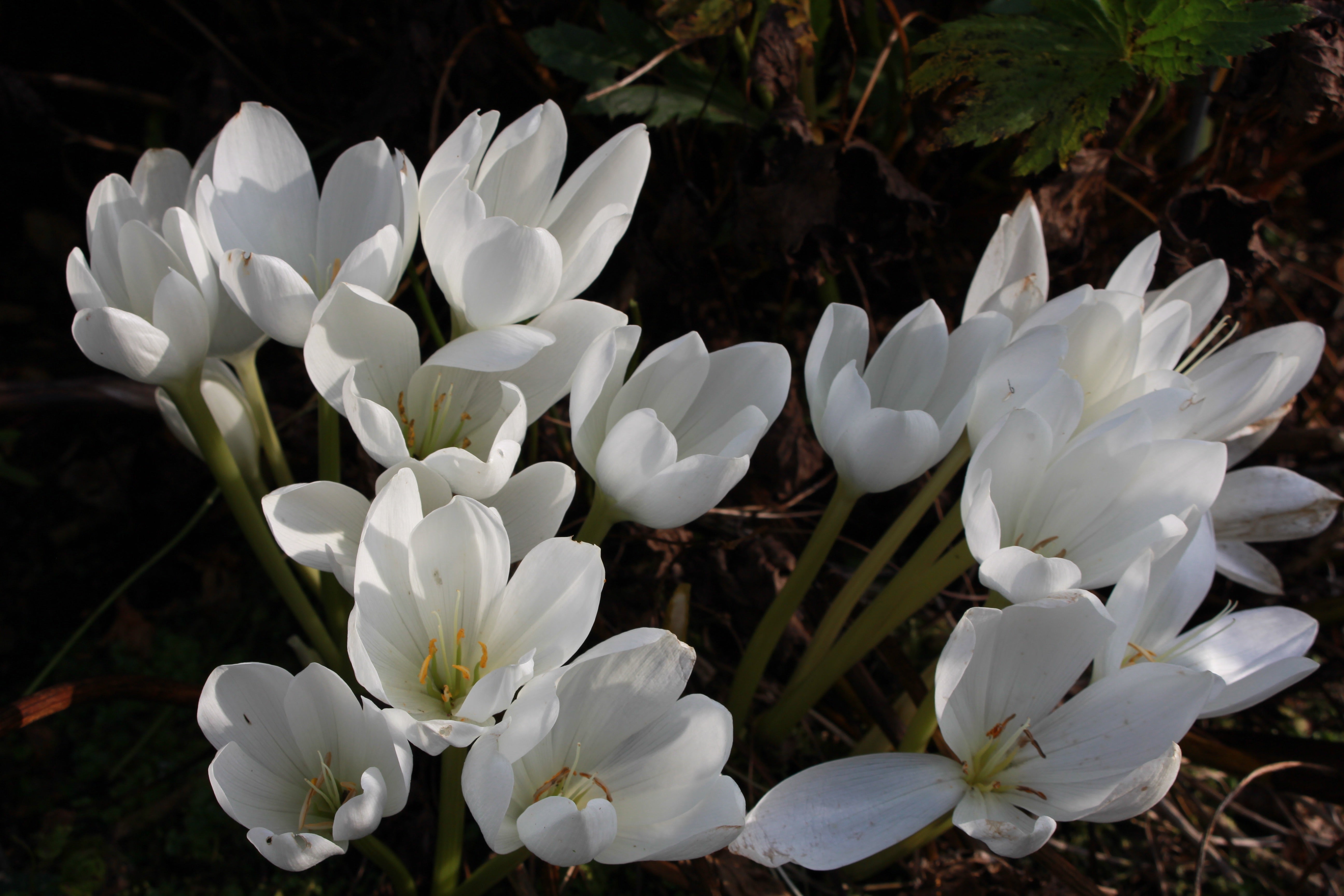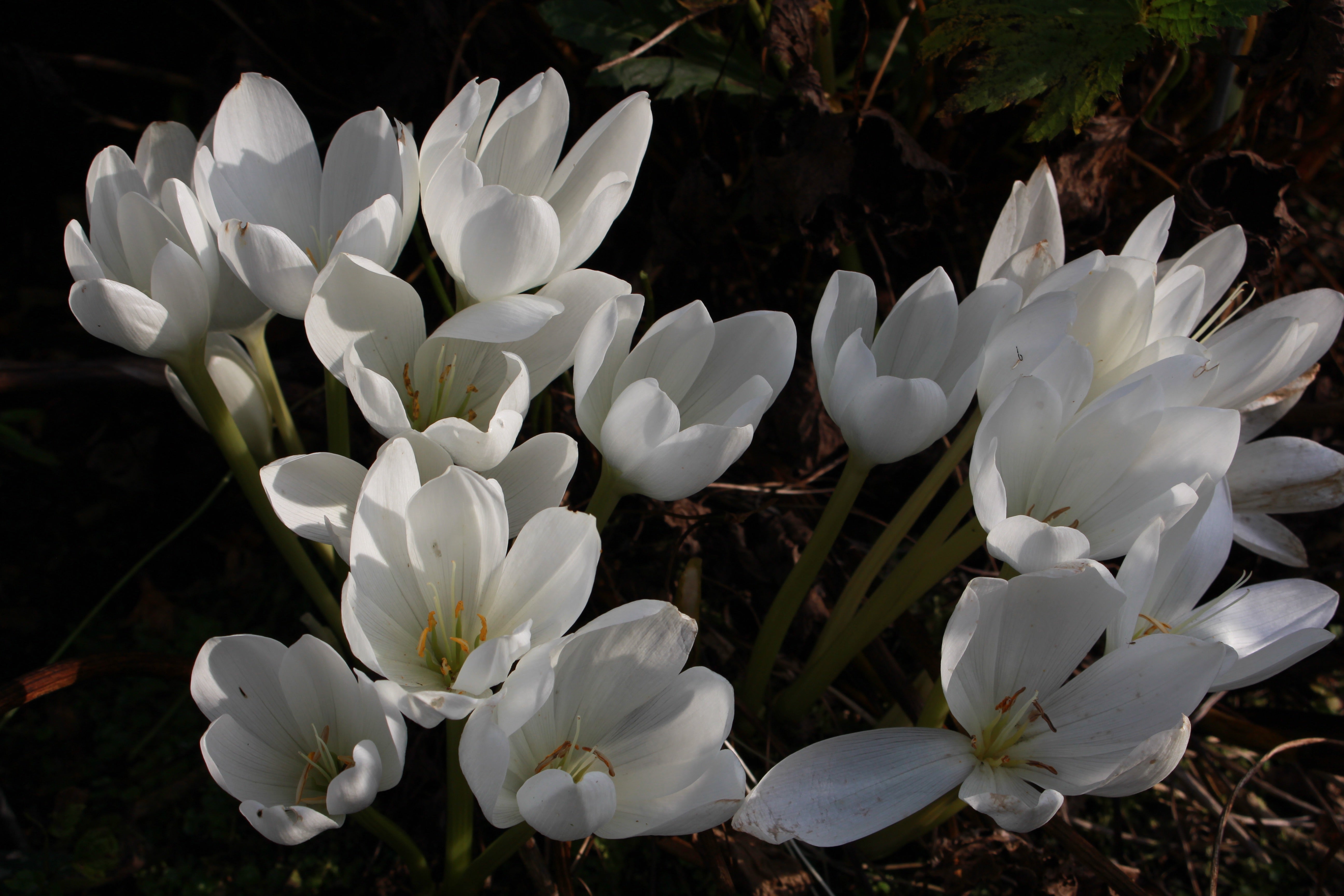Colchicum speciosum 'Album'
Approx. 0.5 litre pot
About this cultivar:
Colchicum speciosum 'Album'what about it. Well, lets hear from Val Bourne in the daily Telegraph "The unrivalled queen of the autumn crocuses is Colchicum speciosum 'Album'. The pure-white goblets, held high on cool green necks in the autumn sunlight, are a truly magnificent sight. In A Handbook of Crocus and Colchicums, published in 1924, E A Bowles recorded that "the first roots that were sold changed hands at the price of five guineas each". Today they are still expensive ..... but the wow factor is as great as ever."
But don't just take My, Vals, and Mr Bowles word for it: It also has the Royal Horticultural Society Award of Garden Merit (RHS AGM)
- Position: Full sun, partial shade
- Soil: Almost any soil, grows well in Ballyrobert
- Flowers: September, October
- Other features: Grows well in Ballyrobert, Royal Horticultural Society Award of Garden Merit (RHS AGM)
- Hardiness: H5 - Hardy in most places throughout the UK even in severe winters (-15 to -10°C), Fully hardy - grows well in Ballyrobert!
- Habit: Columnar or Upright
- Foliage: Deciduous
- Height: 10 - 25 cm (0.3 - 0.8 ft)
- Spread: 0 - 15 cm (0 - 0.5 ft)
- Time to full growth: 2 to 5 years
- Plant type: Herbaceous Perennial, bulb
- Colour: White, green
-
Goes well with: -
About this genus:
Colchicum is a genus of perennial flowering plants containing around 160 species which grow from bulb-like corms. It is a member of the botanical family Colchicaceae, and is native to West Asia, Europe, parts of the Mediterranean coast, an dparts of Africa. Many species previously classified under Androcymbium, Bulbocodium and Merendera are now synonymized under Colchicum based on molecular genetic evidence. In this genus the ovary of the flower is underground. As a consequence, the styles are extremely long in proportion, often more than 10 cm (4 in).
The latin name comes from Colchis, a Black Sea port. It was first used by the ancient physician, pharmacologist, and botanist Dioscorides as a name for Colchicum speciosum. The first plants are said to have sprung from drops of the potion brewed by the enchantress Medea, daughter of the King of Colchis, to restore youth to her husband's father, the ageing Aeson. The common names "meadow saffron" and "naked lady" may be applied to the whole genus or to many of its species; they refer to the long "naked" styles of the crocus-like flowers which appear in late summer or autumn, long before the strap-like foliage which appears in spring.
The other common name, "autumn crocus", is misleading - they do not always flower in Autumn and they are not Crocus. Crocuses have three stamens and flattened, neat, papery corms, while colchicums have six stamens and waxy, irregular corms covered in a dark-brown, leathery skin.
The plant contains the alkaloid colchicine which is used pharmaceutically to treat gout and Familial Mediterranean fever. The use of the roots and seeds in traditional medicine is thought to have arisen due to the presence of this drug. Note however its leaves, corm and seeds can be poisonous. Murderess Catherine Wilson is thought to have used it to poison a number of victims in the 19th century!
Colchicums will grow almost anywhere that isn’t a puddle or a desert. You may read that a whole host of scientific procedures and voodoo is needed to be performed before planting these out. That might be true for bare-root bulbs but we sell ours in pots. Just make sure you don’t plant them before winter and you should be fine.
We like to grow Colchicum in part-shade but you will get more flowers from them in full sun. However, I think floriferous-ness (my word) is not an issue for bulbs; I don't think there is not much underwhelming foliage to worry about if bulbs don’t flower!?!?




